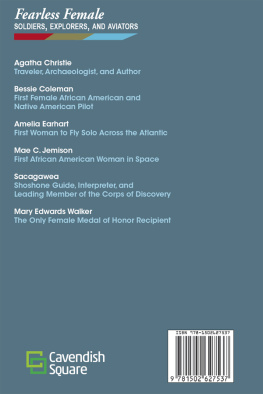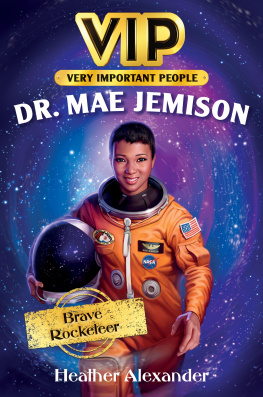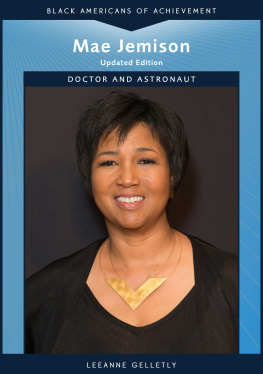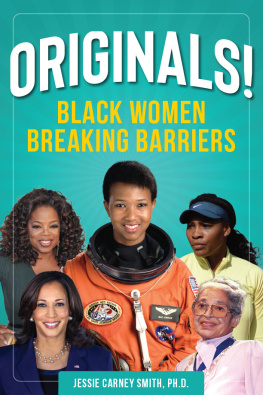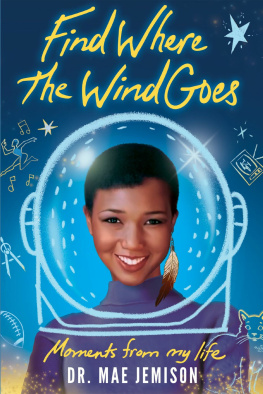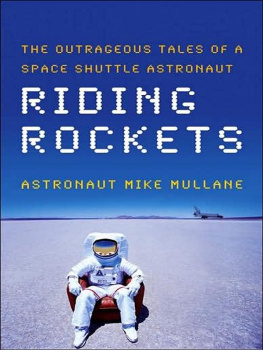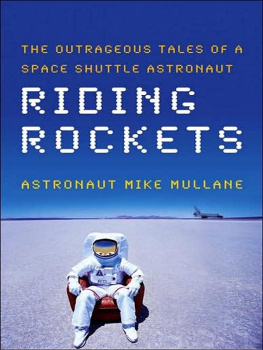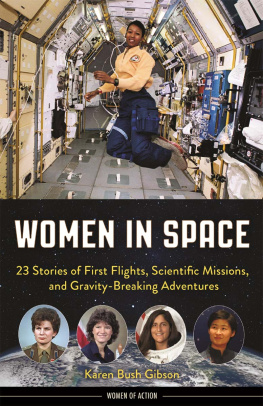
Published in 2020 by The Rosen Publishing Group, Inc.
29 East 21st Street, New York, NY 10010
Copyright 2020 by The Rosen Publishing Group, Inc.
First Edition
All rights reserved. No part of this book may be reproduced in any form without permission in writing from the publisher, except by a reviewer.
Library of Congress Cataloging-in-Publication Data
Names: Uhl, Xina M., author. | Alagna, Magdalena, author.
Title: Mae Jemison: first female African American astronaut / Xina M. Uhl and Magdalena Alagna.
Description: First edition. | New York: Rosen Publishing, 2020 | Series: Super female scientists | Audience: Grades 712. | Includes bibliographical references and index.
Identifiers: LCCN 2019007262| ISBN 9781725340480 (library bound) |
ISBN 9781725340473 (pbk.)
Subjects: LCSH: Jemison, Mae, 1956 Juvenile literature. | African American women astronautsBiographyJuvenile literature. | AstronautsUnited StatesBiographyJuvenile literature. | African American womenBiography Juvenile literature.
Classification: LCC TL789.85.J46 U45 2020 | DDC 629.45/0092 [B]dc23 LC record available at https://lccn.loc.gov/2019007262
Manufactured in the United States of America
On the cover: Astronaut Mae Jemison, floating weightless inside a spacecraft, joined NASA in 1987, flew on the space shuttle in 1992, and resigned from NASA the following year.
CONTENTS
INTRODUCTION
W hen Mae Jemison was five years old, a teacher asked her what she wanted to be when she grew up. Young Mae, who had become interested in science the previous year, promptly replied that she wanted to be a scientist, to the teachers astonishment. It wouldnt be the only time that Mae astonished others.
Throughout her childhood, Mae learned about scientific subjects that fascinated and delighted her: anthropology, archaeology, and astronomy. Her sharp intellect allowed her to skip the seventh grade entirely. She graduated from high school at sixteen years old. Mae then entered Stanford University in California on a National Achievement Scholarship. Mae went on to accomplish her childhood goal, and more, without stopping to dwell on the obstacles that had almost blocked her path.
As she was growing up, Mae had a clear vision of what she wanted to accomplish in her life. She wanted to achieve a variety of goals and to use her knowledge to help others. Following her interests, Jemison graduated from Stanford in 1977 with a dual degree in chemical engineering and Afro-American studies. She went on to medical school at Cornell University and received a doctor of medicine degree in 1981.

STS-47 Mission Specialist Mae C. Jemison poses for her official astronaut photo for the fiftieth space shuttle misssion of the entire program (but only space shuttle Endeavours second mission).
As a medical volunteer in a Cambodian refugee camp and a member and medical officer with the Peace Corps, she served patients in West Africa. While in Africa, Jemison worked with the Centers for Disease Control and Prevention (CDC) and the National Institutes of Health (NIH) on several research projects, including the development of a hepatitis B vaccine. Much of her time has been devoted to working with children. She developed a science camp for teens, and in other projects she worked to make school science and technology classes easier to understand.
Her work took her to Los Angeles, where she became a general medical practitioner. From there, she and fourteen others were selected by the National Aeronautics and Space Administration (NASA) for astronaut training.
With her training as a mission specialist with NASA completed in 1988, she became an astronaut. In 1992, she became a mission specialist aboard the space shuttle Endeavour, to become the first African American woman to enter space. It is for this feat that Jemison is most known.
But Jemison was not through achieving her goals by a long shot. After her 1993 resignation from NASA, she founded the Jemison Group, Inc. The groups projects involved initiatives to improve health care in Africa and working in developing countries to advance technology.
Mae Jemison has accomplished incredible feats. In addition to becoming the first black female astronaut, she worked as a doctor, a scientist, and a teacher. As if that wasnt enough, she made time to learn to speak Japanese, Swahili, and Russian fluently. She also serves on the board of directors for several corporations and helps others by organizing a science camp called The Earth We Share (TEWS).
Jemison has been able to accomplish an incredible amount in her lifetime. How? Her book of collected interviews, lectures, and autobiography, Find Where the Wind Goes: Moments from My Life, reveals that she did it by staying true to herself and her goals rather than allowing herself to dwell on obstacles and setbacks.
CHAPTER ONE
A LOVE OF SCIENCE
O n October 17, 1956, in Decatur, Alabama, Mae Carol Jemison, the youngest of three children, was born to Charlie and Dorothy Jemison. Her father worked as a maintenance supervisor. Her mother became a teacher. Her siblings include a sister, Ada Sue, and a brother, Charles, whose nickname is Ricky. In her autobiography, Jemison lists her own nicknames. At the hospital after her birth, the nurses called her Rosebud because of the shape of her lips. Her father called her Fattening Bug because she grew so quickly as a toddler.
Though she essentially grew up in Chicago, Illinois, far from Decatur, where she was born, Mae would visit Alabama on occasion. Decatur is near Huntsville, Alabama, home of the Marshall Space Flight Center, and Mae would eventually spend much time there during her astronaut training.

Mae Jemisons birthplace, Decatur, Alabama, is located on the Tennessee River. Shown here are early and late twentieth century buildings on Bank Street, the citys downtown district.
According to her autobiography, Jemison has fond memories of Decatur. Among these memories is a shocking story of how she, as a two-year-old, drove her fathers car. As the story goes, Dorothy and Charlie Jemison and some of their friends had gone shopping with little Mae. They pulled into the parking lot of a store, and Dorothy got out to pick up some groceries. She needed help carrying the bags, so Charlie got out of the car to help her. Mae, right under the noses of Charlies two friends, clambered into the front seat of Charlies Buick and managed to pop the clutch, put the car in gear, and hit the gas pedal. However, she was too little to see over the steering wheel, and the car quickly smashed into three parked cars.
The Windy City
When Mae was three years old, the family moved to Chicago. In her autobiography, Jemison wrote that her mother decided to move to Chicago because there werent as many opportunities for work in Decatur, Alabama. In fact, Jemison recalled visiting Decatur as an adult, and she admitted that it was a sleepy little town. In Decatur at that time, most black women could find work only as maids for white people. Dorothy Jemison had gone to college for two years at Talladega College in Alabama, and she wanted to complete her bachelors degree. She packed up her three children and moved to Chicago. Charlie Jemison, who had not at first wanted to leave Alabama, followed a few months later. Dorothy did, in fact, finish her degree and became a schoolteacher. She also went on to get her masters degree. Maes mom served as a good role model for the young girl. Mae learned early on that a good education was very important.
Next page






